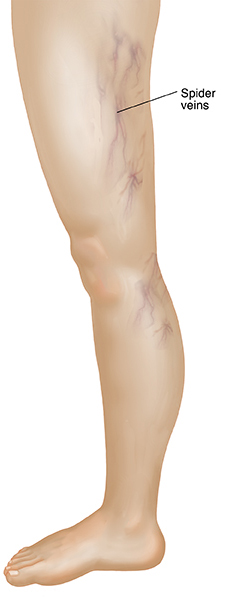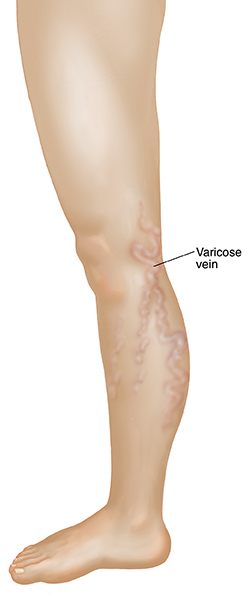Attend a free community seminar on Thursday, March 21. For more information and to register online visit www.lakelandhealth.org/veinseminar
Understanding Spider and Varicose Veins
Do you often hide your legs because of the way they look? You may have noticed tiny red or blue bursts (spider veins). Or maybe you have veins that bulge or look twisted (varicose veins). If so, there are treatments that can help
What are the symptoms?
Spider veins or varicose veins may never be a problem. But sometimes they can cause legs to ache or swell. Your legs may also feel heavy and tired, or like they’re burning. These symptoms may be more severe at the end of the day. Prolonged sitting or standing can also make your symptoms worse.
Who gets spider and varicose veins?
Anyone can get spider or varicose veins. But vein problems tend to be hereditary (run in families). Other factors that can affect veins include:
-
Pregnancy, hormones, and birth control pills
-
A job where you stand or sit a lot
-
Extra weight or lack of exercise
-
Age

Spider veins look like tiny webs on the ankles, legs, and upper thighs.

Ropy, dark blue, red, or flesh-colored varicose veins are most common on the thighs, calves, and feet.
What can be done?
Spider and varicose veins can affect the way you feel about yourself. Talk to your healthcare provider about your concerns. There are treatments that can ease symptoms and make your legs look better.
Your treatment choices
Treatment may include self-care, sclerotherapy (injecting veins with a chemical), surgery, or newer nonsurgical minimally invasive therapies. Spider veins and some varicose veins can be treated with sclerotherapy. Large varicose veins can often be treated with newer minimally invasive procedures and, in rare cases, surgery may be needed.